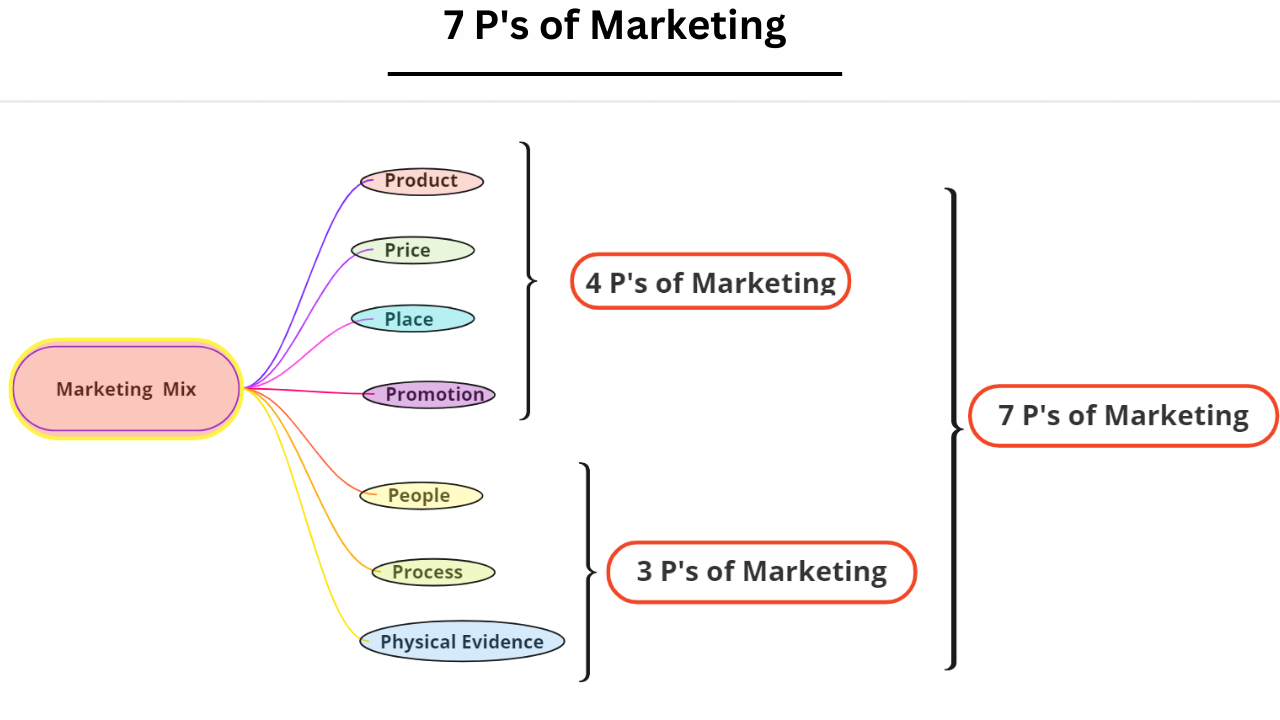
Understanding the concepts of need, want, and demand in marketing is crucial for creating effective marketing strategies. Need refers to basic requirements, while want is a desire for something that can satisfy the same need in different ways. In marketing, the key is to cater to the needs of the target audience rather than their wants. Demand is a subset of purchasing power and is influenced by perceived value. The 7 P’s of marketing, Product, Price, Place, Promotion, People, Process, and Physical Evidence, are essential elements in creating an effective marketing strategy. These elements include product quality, price, place, and promotion. By catering to the needs of your target audience and providing value through your products or services, you can create effective marketing strategies that drive growth and success.
Understanding the Concepts of Need, Want, and
The terms ‘need,’ ‘desire,’ and ‘demand’ are frequently used interchangeably in the marketing industry. They do, however, have diverse connotations that might have a considerable impact on your marketing plan. Let us go deeper into these ideas to acquire a better grasp.
The Distinction Between Need and Want
A ‘need’ is a basic survival requirement, such as water when you’re thirsty. A ‘want’, on the other hand, is a desire for something that isn’t necessary for living but can satisfy the same need in various ways. For example, if you’re thirsty, you could choose a soda or an alcoholic beverage over water.
In marketing, ‘need’ relates to what you already have, and ‘desire’ refers to what a product can fulfill. For example, you may require a meal (roti) but desire pizza. The idea here is to discover and cater to your target audience’s ‘needs’ rather than their ‘wants’.
The Importance of Demand in Marketing
Purchasing power is a subset of demand. It enters the picture when a consumer has the financial means to satisfy their desires. For example, tap water, RO water, packaged water like Bisleri, and even luxury black water costing Rs.500 are all available in the market. The type of water you drink is determined by your purchasing ability.
However, demand is not entirely determined by purchasing power; it is also influenced by perceived worth. Consumers frequently view more-priced products to be of higher quality. Because of their higher price tags, Apple items, for example, are seen as superior to MI products.
The Seven Ps of Marketing

Product, Price, Place, Promotion, People, Process, and Physical Evidence are the seven fundamental pillars of marketing. These components are essential in developing an efficient marketing plan.
Product
Quality, features, branding, equity, and guarantees are all characteristics of the product. To avoid unethical marketing methods, it is critical to be honest about the quality and characteristics of your product.
Price
Your product’s price should match its perceived value. It should be set at a price that your target audience will accept and that corresponds to their purchasing capacity.
Place
The location is the location where your goods are sold. It could be done online or in person.
Promotion
All techniques of communicating with buyers about your product are included in the promotion.
People, Process, and Physical Evidence are the last three P’s that are more relevant for service-based firms but can also apply to product-based businesses.
Finally, any marketer or business owner must comprehend the principles of need, want, and demand. You may produce efficient marketing by catering to the demands of your target audience and giving value through your products or services.
Payment Terms and Product Delivery
Payment terms and product delivery methods are crucial aspects of your marketing strategy. You could ask for payment upfront, after a trial period, or even after the customer starts seeing results. Similarly, your product could be delivered physically or digitally, depending on its nature.
The Importance of Place in Marketing
The ‘place’ in marketing refers to where your product is sold. It could be online or in physical stores. The key is to ensure that your product is available wherever your target audience is likely to look for it.
Promotion and Influencer Marketing
Promotion is all about how you communicate with your customers about your product. In today’s digital age, influencer marketing has emerged as a powerful promotional tool. It involves partnering with influencers – individuals with a substantial online following and influence – to promote your product.
Influencer marketing can be particularly effective for small businesses. By giving free products to nano or micro-influencers (those with a smaller but significant following), you can reach a wider audience without a huge investment.
However, it’s important to choose influencers who align with your brand values to avoid brand dilution. Also, remember that while influencers with millions of followers can provide extensive reach, their endorsement might not be as impactful if they’re constantly promoting different products.
Influencer Marketing and Brand Dilution
Influencer marketing can be a powerful tool for promoting your brand. However, it’s important to be mindful of brand dilution. If an influencer is promoting too many brands, their endorsement might not be as impactful. It’s crucial to find influencers who align with your brand values and can create a genuine connection with their audience.
Influencer marketing can also be a cost-effective strategy for small businesses. By offering free products to nano or micro-influencers, you can reach a wider audience without a huge investment. However, it’s important to ensure that the influencer’s audience aligns with your target market.
Direct Marketing
Direct marketing is another effective promotional strategy. This involves reaching out to potential customers directly. For example, you could use digital ads or even traditional methods like posters or flyers. The key is to think smartly about how you can reach your target audience most effectively.
The Role of People in Marketing
The ‘People’ in the 7 P’s of marketing refers to everyone who comes into contact with your customers, including your employees and yourself. It’s important to ensure that everyone in your organization understands and embodies your brand values.
The Importance of Process Demand in Marketing
The ‘Process’ refers to the systems and procedures that your business uses to deliver its products or services. Having clear and efficient processes in place is crucial for ensuring customer satisfaction and business growth.
In conclusion, understanding and effectively leveraging the concepts of need, want, demand, and the 7 P’s of marketing can significantly enhance your marketing strategy and drive business growth.
Standard Operating Procedures (SOPs)
SOPs are a set of step-by-step instructions compiled by an organization to help workers carry out complex routine operations. SOPs aim to achieve efficiency, quality output, and uniformity of performance while reducing miscommunication and failure to comply with industry regulations.
For instance, in the context of a YouTube channel, SOPs could include processes for news research, presentation, shooting, and editing. By standardizing these processes, you can ensure consistency in your content and make it easier to scale your operations.
Physical Evidence
Physical evidence refers to the tangible aspects of your service that customers experience. This could include the environment in which the service is delivered (like the interior of a salon), the equipment used (like designer scissors), or even the appearance of your website.
In conclusion, SOPs and physical evidence are crucial elements of a successful marketing strategy. By standardizing your processes and paying attention to the tangible aspects of your service, you can enhance customer satisfaction and drive business growth.
Read More: Performance Marketing Fundamentals

